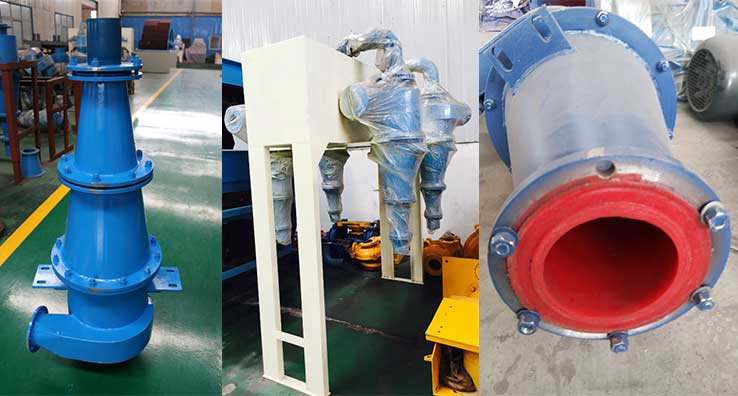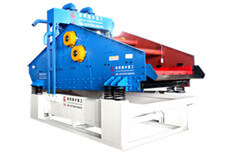Cyclone is a kind of equipment for classification according to particle size and density. The cyclone has widely used in a variety of beneficiation operations, not only for desliming and thickening of ore slurry, but also as a grading device in the grinding circuit. So, in order to obtain a good graded operation effect, what points should be paid attention to in the selection and operation of the cyclone?

The materials to be classified are fed into the cylinder inner at high speed and rotate to form centrifugal force. Particles of different sizes and densities will produce different trajectories. Under the action of centrifugal force, medium viscous resistance, buoyancy, gravity, and other force fields, coarse particles and high-density particles move to the periphery and are discharged from the grit through the cone. Fine particles and low-density particles move to the center and are discharged from the overflow pipe. So as to realize the separation of coarse and finely divided solid particles and fluids of different densities.
1. Determine suitable structural parameters
When selecting the cyclone, the structural parameters should be determined mainly based on the volume of the slurry to be processed and the graded particle size. First, determine the diameter of the cyclone. Generally, when the processing capacity is large, it is recommended to use a large-size cyclone, otherwise, use a small-size cyclone. When the processing capacity is large and the overflow is very small, it is recommended to use small-size cyclones to form a cyclone group in parallel. Secondly, when the diameter of the cyclone has been determined, select its structural parameters according to the processing capacity and the graded particle size, such as the diameter of the overflow pipe, the diameter of the grit, the diameter of the ore supply, the height of the cylinder, the insertion depth of the overflow pipe, the cone angle, etc.
2. Select the appropriate feeding method
In general, there are three main feeding ways of the cyclone:
A. Sand pump directly feed
B. Self-flow feeding with the help of height difference
C. Stabilizer box feeding
3. Maintain a stable feed pressure
The feed pressure of cyclone will directly affect the processing capacity and grading particle size, which can be adjusted by adding a frequency converter to the slurry pump. After determining the graded particle size, a certain pressure is required to adapt to it. The higher the feed pressure, the higher the slurry flow rate, the higher the rotation speed and centrifugal force, and the finer the classification particle size.
4. Maintain proper feed concentration
The feed concentration will directly affect the concentration and particle size of the final product. When the feed concentration is too low, the classification efficiency of the cyclone is higher, but the processing capacity decreases. When the feed concentration is too high, the viscosity of the slurry increases, and the classification efficiency of the cyclone decreases. Generally, the finer the graded particle size, the lower the ore concentration should be.
5. Configure the appropriate diameter of the sand spout
The change of the sand spout can be judged according to the spray angle when the grit is sprayed. The spray angle is generally between 20°-30°. If the finished material is discharged in a rope shape, it means that the grit port is small and the grit concentration is higher at this time. If the finished material is ejected in an umbrella shape, it means that the grit port is large and the grit concentration is the lowest at this time.
Related Products
Send us a message
We will provide you with the most professional services.


